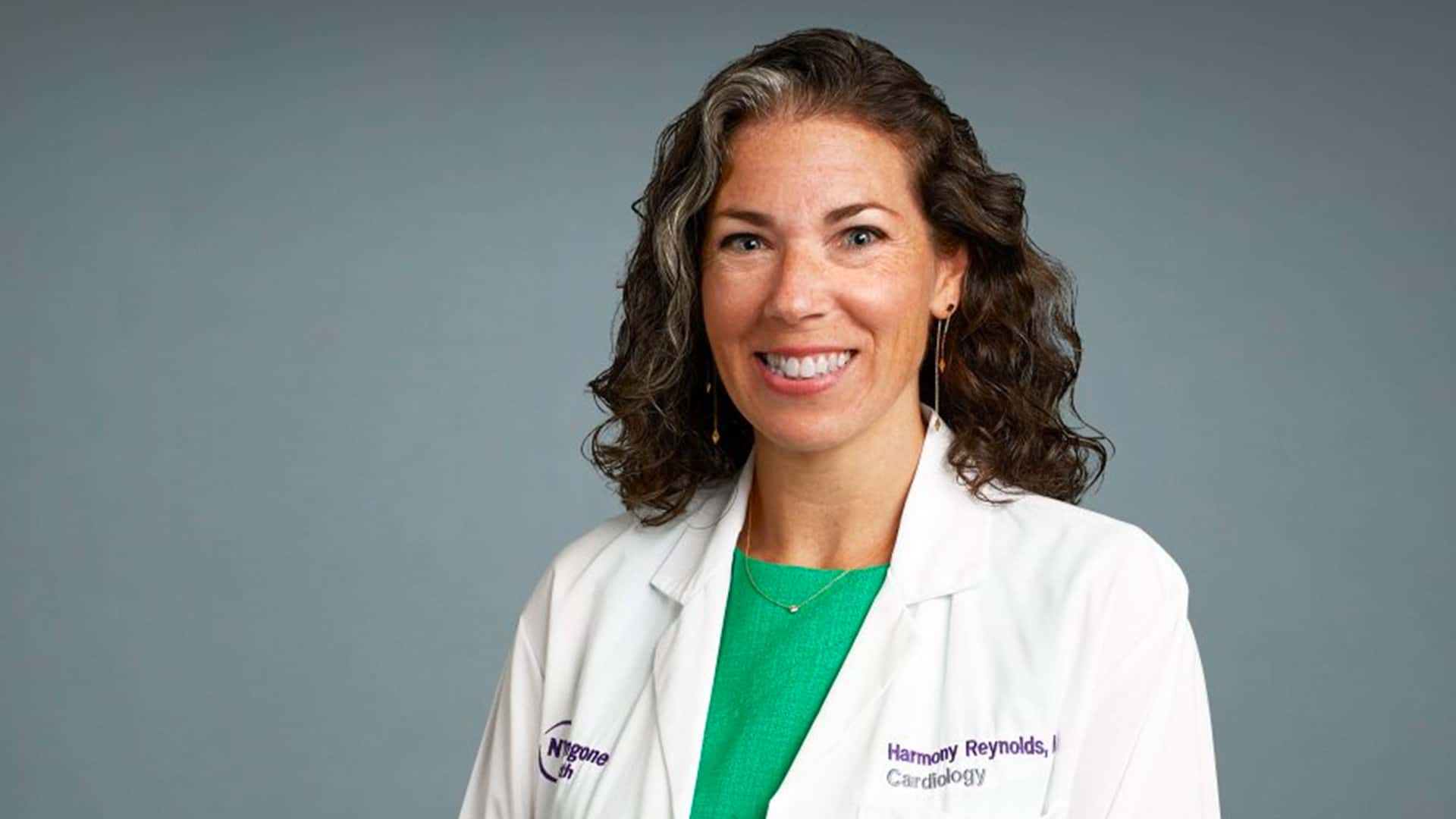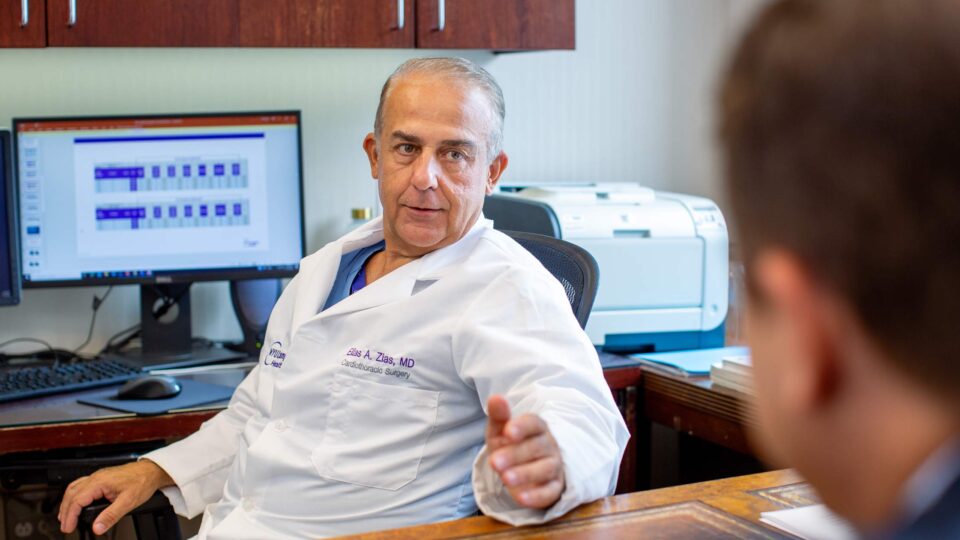Harmony R. Reynolds, MD, conducts ongoing research into the root causes of heart attacks unassociated with obstructive coronary artery disease. With support from the American Heart Association (AHA), Dr. Reynolds is leading one of the first-ever long-term studies to utilize advanced imaging to identify the conditions behind heart attacks in predominantly female patients. Here, she provides insights on the ways in which comprehensive evaluation and diagnosis can support more targeted treatment and care of these patients.
Physician Focus: Much of your research centers on cardiac concerns of women. Can you tell us the difference between the types of ischemic heart disease that tend to impact female patients more than males?
Dr. Reynolds: There are two related but distinct disorders: myocardial infarction with non-obstructive coronary arteries (MINOCA), and ischemia with no obstructive coronary arteries (INOCA).
MINOCA is now recognized as true heart attack, but without the typical clinical picture of severe coronary narrowing. Patients generally may have plaque but their arteries are less than 50 percent obstructed. It’s a heterogenous diagnosis with several pathophysiological mechanisms.
Like MINOCA patients with acute coronary syndrome, patients with stable INOCA have unobstructed arteries with true ischemia, frequently presenting as chest pain. The main mechanisms of INOCA appear to be microvascular disease and coronary artery spasm. Coronary artery spasm can also cause MINOCA.
In both cases, patients are often evaluated for coronary artery disease, then sent on a diagnostic odyssey once obstructive coronary artery disease is ruled out. For many patients, once we conduct the specific testing our center is equipped for, we find abnormal results that point to a root cause.
“Patients are often evaluated for coronary artery disease, then sent on a diagnostic odyssey once obstructive coronary artery disease is ruled out.”
Harmony R. Reynolds, MD
Physician Focus: How does pinpointing the specific diagnosis contribute to better cardiac outcomes for these patients?
Dr. Reynolds: Advanded diagnostics often yield more subtle findings that can help us both prognosticate and better tailor treatment. And there’s reason to perform these targeted tests early as some findings, such as myocardial edema, are transient. The initial injury from an infarct event is much larger and more easily discoverable than the final scar, particularly in patients with MINOCA.
The other benefit is psychological. Before a specific diagnosis, patients with INOCA may have been told they’re overreacting, that it’s “just stress,” but they know something’s wrong when they can’t walk two blocks without shortness of breath. When we give a name to patients’ diagnosis and recommend treatment, I often think it’s as helpful to their quality of life as prescription.
The Path Toward Diagnosis
Physician Focus: What are those specific tests, and how do they inform diagnosis and care?
Dr. Reynolds: Timely cardiac MRI is really important in patients with MINOCA, because somewhere between 20 to 40 percent of patients may ultimately have a nonischemic diagnosis. But within ischemic injury, a significant cohort are found to be atherosclerotic. There’s a range of those findings, from large, dense infarct to myocardial regional edema, an early sign of injury with no late gadolinium enhancement.
For those patients with ischemic MINOCA, we tailor secondary measures to prevent another event. When there is atherosclerotic plaque rupture or erosion on coronary optical coherence tomography (OCT)—which uses light to image blood vessel walls—we take typical secondary prevention measures, just as in typical heart attack. Only imaging from inside the vessel wall provides enough detail to see that plaque has ruptured or has erosion. Only having some plaque present is not enough to cause an event.
For up to two thirds of patients with MINOCA, OCT combined with MRI identifies a pattern suggestive of coronary artery spasm, which significantly impacts care. Observational studies indicate that calcium channel blockers can reduce mortality in this patient subset, and we typically prescribe long-acting nitrates as well.
In INOCA, our interventional cardiologists have conducted studies examining the role of invasive testing, such as index of micro-circulatory resistance, which indicates resistance problems in the microvasculature, and measurement of coronary flow reserve. We perform spasm testing, available at only a few centers nationwide, to create individualized treatment plans for patients. For those who prefer noninvasive testing, we combine cardiac MRI with positron emission tomography (PET), for a highly valid diagnosis of microvascular disease.
Gender, Genes, and Other Causes
Physician Focus: Is it well understood why women experience these conditions more frequently than men?
Dr. Reynolds: One theory involves estrogen receptor signaling; whether hormone expression could trigger the cascade of cardiovascular changes that trigger MINOCA or INOCA. In our AHA-funded program studying myocardial infarction in women, we performed whole blood RNA sequencing on a group of women with MINOCA, identifying unique pathways that are differentially regulated in those patients as compared to heart attack patients with coronary disease and controls.
The other question is, are women expressing their symptoms differently? To what degree do home and family care responsibilities perhaps provoke more chest pain with less coronary disease or ischemia?
One of our natural history studies from the ISCHEMIA trial revealed that women with obstructive coronary disease had less extensive disease and more angina than men with obstructive disease. In our study of INOCA, we observed substantial variability in stress test findings and in symptoms over time. That is consistent with what we see in clinical practice, where symptoms ebb and flow. Is this related to differences in hormone programming, vascular function, or even neural control? There is still so much to learn about how ischemia relates back to symptoms in day-to-day life.






